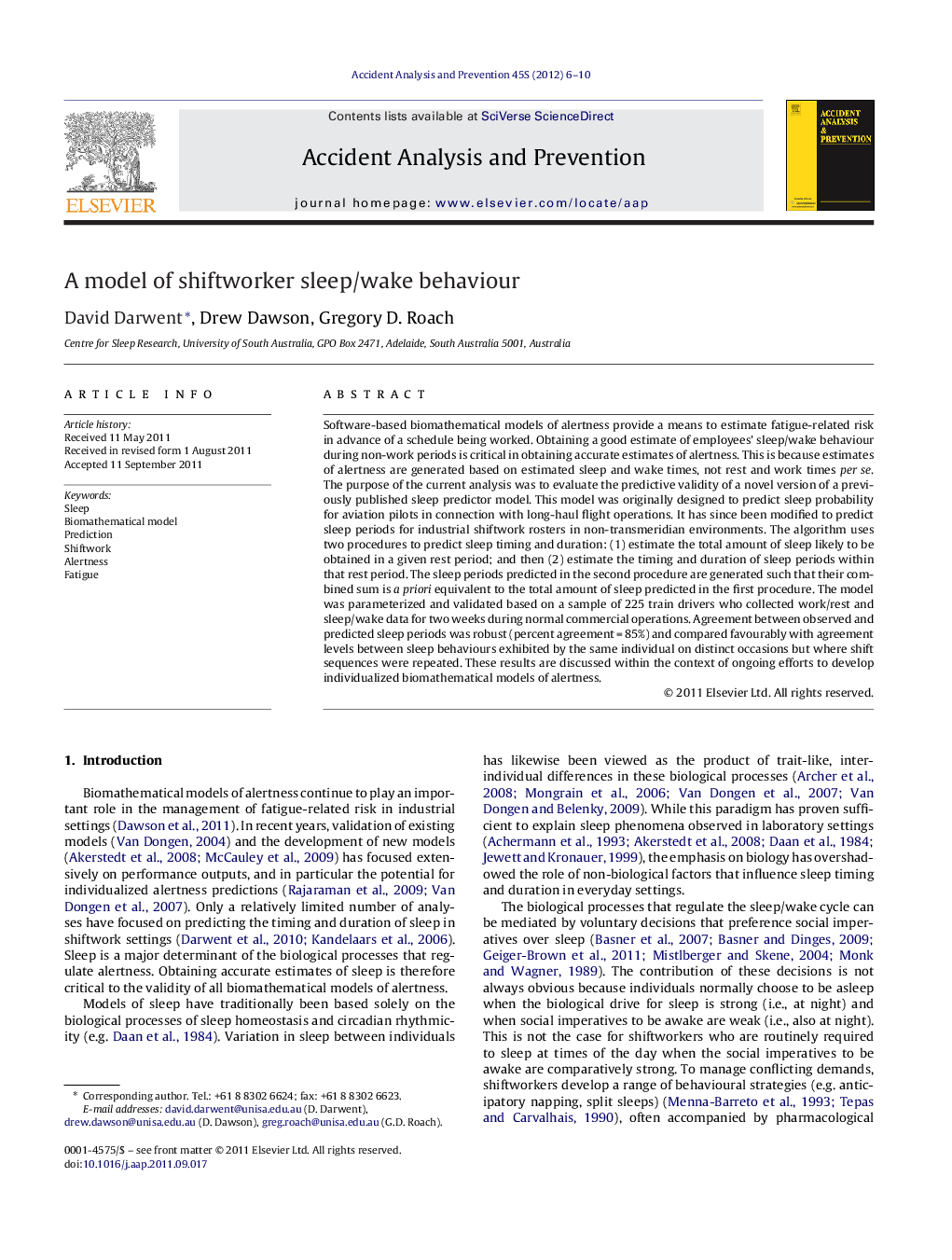| کد مقاله | کد نشریه | سال انتشار | مقاله انگلیسی | نسخه تمام متن |
|---|---|---|---|---|
| 572898 | 877384 | 2012 | 5 صفحه PDF | دانلود رایگان |

Software-based biomathematical models of alertness provide a means to estimate fatigue-related risk in advance of a schedule being worked. Obtaining a good estimate of employees’ sleep/wake behaviour during non-work periods is critical in obtaining accurate estimates of alertness. This is because estimates of alertness are generated based on estimated sleep and wake times, not rest and work times per se. The purpose of the current analysis was to evaluate the predictive validity of a novel version of a previously published sleep predictor model. This model was originally designed to predict sleep probability for aviation pilots in connection with long-haul flight operations. It has since been modified to predict sleep periods for industrial shiftwork rosters in non-transmeridian environments. The algorithm uses two procedures to predict sleep timing and duration: (1) estimate the total amount of sleep likely to be obtained in a given rest period; and then (2) estimate the timing and duration of sleep periods within that rest period. The sleep periods predicted in the second procedure are generated such that their combined sum is a priori equivalent to the total amount of sleep predicted in the first procedure. The model was parameterized and validated based on a sample of 225 train drivers who collected work/rest and sleep/wake data for two weeks during normal commercial operations. Agreement between observed and predicted sleep periods was robust (percent agreement = 85%) and compared favourably with agreement levels between sleep behaviours exhibited by the same individual on distinct occasions but where shift sequences were repeated. These results are discussed within the context of ongoing efforts to develop individualized biomathematical models of alertness.
► A model to predict sleep timing and duration of shiftworkers was evaluated.
► The timing and duration of train driver's sleep was measured in a workplace setting.
► Agreement between predicted and observed sleep times was robust (agreement = 85%).
► Testing in other industries is needed to assess whether the results are generalizable.
Journal: Accident Analysis & Prevention - Volume 45, Supplement, March 2012, Pages 6–10